Microcontroller units (MCUs) never stop evolving; a more functional, featured MCU follows every model. Embedded systems have grown with continually growing MCU technology, yet there are many traditional MCUs that are still selling in high volumes. Atmel 8051 is one of those legendary MCUs which have developed a considerable demand in the market.
The Atmel 8051 is one of the bestselling descendants of the 8-bit Intel MCS-51. Four decades ago, Intel introduced an 8-bit MCU with limited features, the MCS-51. In just a few years after launch, the 8051 design was leading the embedded market and multiple manufacturers introduced their own versions of the 8051. For several years the 8051 MCUs offered appealing functions and features that increased growth for this architecture as more designs piled up for a multitude of end products.
Back in the 1980s, there were very few MCUs with comparable features to the 8051 architecture as the best option for embedded products. Decades later, what’s keeping the 8051 alive?
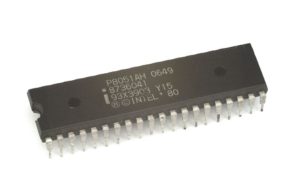
Today’s 8051 MCU applications
Continual improvements to 8-bit MCU architectures help them retain MCU unit sales volumes, even with cost-competitive 32-bit MCUs. Today’s 8-bit MCUs are still landing new and legacy design-in sockets that require lower prices, ultra-low power consumption, and small physical form factors. For example, an 8-bit (one byte) wide processor consumes less power than 16- or 32-bit MCUs. The latest Cortex M7 based 32-bit MCUs can process at speeds of hundreds of MHz, yet the use of traditional 8-bit MCUs are not declining in the market.
Many commercial product vendors still trust the 8051 MCU for various reasons, the most prominent being low cost and low power consumption. Despite the more limited features and old architecture, the 8051 is still used in some wireless communication products. The latest HC-10 Bluetooth modules are based on 8051 core. Although 16-bit or 32-bit MCUs can replace the functions offered by 8051s, the 8-bit MCU is sufficient for many product developers. Another reason for retaining 8-bit MCUs is that 8-bit MCUs are easier to program and troubleshoot than 16- and 32-bit MCUs because there’s physically fewer bits to address, debug, and investigate.
Examples of 8051 MCU-based devices include Bluetooth gadgets,[i] wireless transceivers, used inside the communication system of wireless power meters, and more. [ii] No doubt the modern transceivers based on 32-bit cores are exceedingly effective, but 8051 MCUs are suitable for low-cost products, especially for products where one cent in savings per unit makes a huge difference at high volumes.[iii]
Apart from commercial products, 8051 MCUs are still actively used in academic activities, as well. Many academic institutions still prefer the architecture and programming of the 8051 for teaching basic embedded systems and relevant topics. For example, it’s much easier to wrap your brain around 8-bit constructs than 16- or 32-bits in terms of detailed study of operations, memory, addressing, and so forth. Project development boards are widely used in coaching activities, which is why 8051-based development kits are still in demand today.
Aside from 8051 MCUs, many other 8-bit MCUs have made their way into commercial products. Microchip is undeniably the largest supplier of 8-bit MCUs. Microchip’s low-cost 8-bit chips are accompanied by free tools, which also buoys 8-bit MCUs as a low-cost option. An 8-bit MCU can accomplish more than would be expected. For example, in 2014 OPU SAT was launched into space with a Microchip’s 8-bit PIC16F877 MCU controlling its communication system.
8-bit MCUs used in satellites
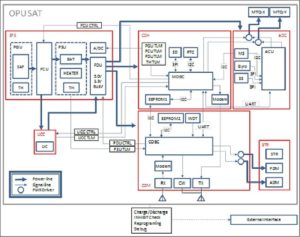
Even though 8-bit MCUs have made their way into space, wider-bit MCUs are preferable for areas demanding a higher level of processing. The OPU SAT also contained a Microchip 16-bit PIC24FJ256GA110 MCU in its command and data handling unit.
The PIC24FJ256GA110 MCU is somewhat famous in satellites as it has been used in other satellites as well. The PIC24FJ256GA110 MCU was also used in the Aeneas 3u Satellite as a flight processor. [iv]
8-bit MCUs can clock at decently high frequencies considering that many applications don’t require massive amounts of rapid calculations. Some applications only need to check a status once a minute, for instance. Thus, 8-bit MCUs are more than enough for many applications. The central processing unit, in many cases, is a minuscule part of most devices with multiple peripherals. The Atmel 8051 MCU has certain limitations for its peripherals as compared to 32-bit MCUs. However, there are many applications for MCUs where the peripherals are enough for developing products that do not involve intense, high-speed processing.
Several general-purpose input/output (GPIO) lines, Pulse Width Modulation (PWM), and some flash memory can be suitable for small-scale projects. However, as a significant drawback, the 8051 MCU does not support Analog to Digital Conversion (ADC), and an external ADC has to be connected to it for reading analog signals. Nevertheless, there are many 8-bit MCUs with an integrated ADC, such as Microchip’s ATtiny202/402 AVR MCUs. However, 32-bit MCUs with ADCs typically have multiple ADC channels on the chip. Some 8-bit MCUs have Digital to Analog Converters (DACs) on-chip. Nevertheless, the cost-cut with 8051 MCU as compared to 32-bit MCUs enables low-cost production.
Memory is also an area of difference between 8-bit and higher-bit MCUs. For instance, 64 KB of flash memory in an 8051 MCU is insufficient for detailed instructions whereas 32-bit MCUs like the ATSAMS70Q20B MCU have 2 MB of flash memory. Not every MCU project requires flash memory as high as 2 MB.
In the end, it’s true that most 8-bit MCUs are no match to 32-bit MCUs in terms of speed, processing capability, support for numerous peripherals, and memory, but 8-bit MCUs are still more suitable for devices where extensive features and high processing speed are not essential.
Communication protocols
Traditional MCUs have limited communication protocols, but over time, MCUs have evolved. Multiple communication protocols are necessary for extensive circuits where an MCU has to communicate with other devices. For example, the Microchip ATSAMS70Q20B MCU supports Master Controller Area Network (MCAN), Serial Peripheral Interface (SPI), I²C (Inter-Integrated Circuit), Ethernet, Universal Serial Bus (USB) and the Universal Asynchronous Receiver-transmitter (UART). However, the 8051 MCU supports limited communication protocols which restrains its use in areas where multiple communication protocols are required. Thus, for limited communication protocols, 8051 MCU can serve the purpose.
Power consumption
When choosing an MCU, special attention is most often paid towards the power budget and requirements. MCUs consume considerable power during operation, so several levels of idle and sleep states can make a difference during inactivity. The latest MCUs can sleep during inactivity which saves considerable power in the long term. Traditional 8-bit MCUs such as 8051 may not have any such features. Sleep states during inactivity can make a large impact on power consumption, so older MCUs consume more power than modern MCUs with otherwise equivalent features.
8-bit MCUs still going strong at Microchip
Microchip is still producing new 8-bit MCUs, generating a significant amount of revenue from 8-bit MCUs. Silicon Labs also releases new 8-bit MCUs. 8-bit MCUs are still used in plenty of products in legacy products and in new designs. 8-bit MCUs tend to be easier to program and understand on a deep level compared to 32-bit MCUs and are not likely to go away as long as an 8-bit MCU costs less than an equivalent 32-bit MCU.
[i] https://www.alibaba.com/product-detail/High-performance-and-low-power-MCU_60391542233.html?spm=a2700.7724838.2017115.93.106b4e3dyptiH4
[ii] http://www.ti.com/product/CC2511
[iii] https://www.alibaba.com/product-detail/Good-Quality-Integrated-Power-meter-with_60770229988.html?spm=a2700.galleryofferlist.normalList.129.60741e813LizGS
[iv] https://earth.esa.int/web/eoportal/satellite-missions/a/aeneas

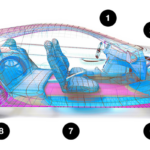

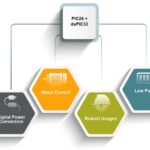
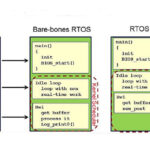
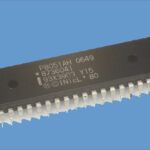
Very useful information. I thank you for all that.